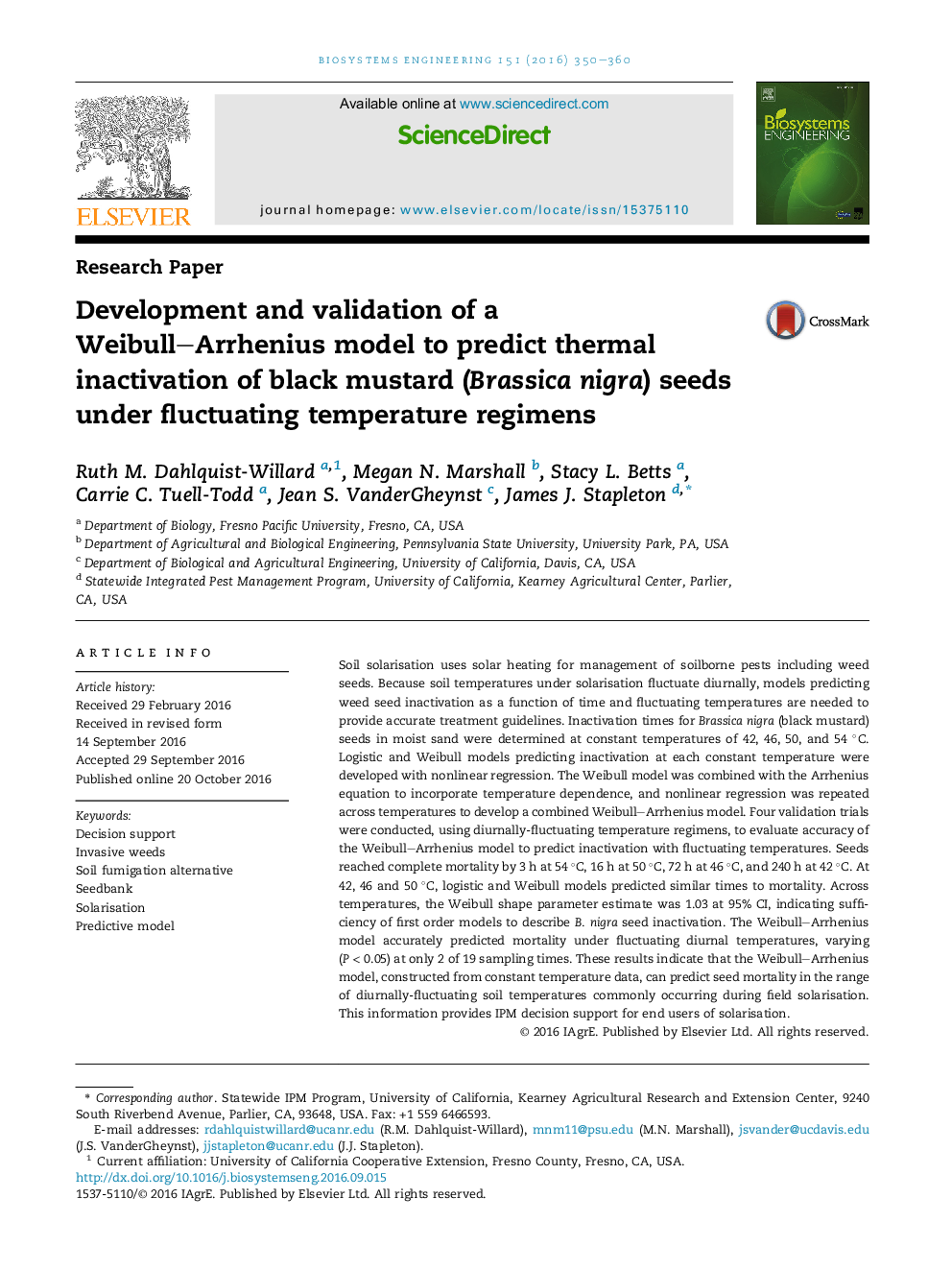| کد مقاله | کد نشریه | سال انتشار | مقاله انگلیسی | نسخه تمام متن |
|---|---|---|---|---|
| 8055024 | 1519510 | 2016 | 11 صفحه PDF | دانلود رایگان |
عنوان انگلیسی مقاله ISI
Development and validation of a Weibull-Arrhenius model to predict thermal inactivation of black mustard (Brassica nigra) seeds under fluctuating temperature regimens
دانلود مقاله + سفارش ترجمه
دانلود مقاله ISI انگلیسی
رایگان برای ایرانیان
کلمات کلیدی
موضوعات مرتبط
مهندسی و علوم پایه
سایر رشته های مهندسی
کنترل و سیستم های مهندسی
پیش نمایش صفحه اول مقاله

چکیده انگلیسی
Soil solarisation uses solar heating for management of soilborne pests including weed seeds. Because soil temperatures under solarisation fluctuate diurnally, models predicting weed seed inactivation as a function of time and fluctuating temperatures are needed to provide accurate treatment guidelines. Inactivation times for Brassica nigra (black mustard) seeds in moist sand were determined at constant temperatures of 42, 46, 50, and 54 °C. Logistic and Weibull models predicting inactivation at each constant temperature were developed with nonlinear regression. The Weibull model was combined with the Arrhenius equation to incorporate temperature dependence, and nonlinear regression was repeated across temperatures to develop a combined Weibull-Arrhenius model. Four validation trials were conducted, using diurnally-fluctuating temperature regimens, to evaluate accuracy of the Weibull-Arrhenius model to predict inactivation with fluctuating temperatures. Seeds reached complete mortality by 3 h at 54 °C, 16 h at 50 °C, 72 h at 46 °C, and 240 h at 42 °C. At 42, 46 and 50 °C, logistic and Weibull models predicted similar times to mortality. Across temperatures, the Weibull shape parameter estimate was 1.03 at 95% CI, indicating sufficiency of first order models to describe B. nigra seed inactivation. The Weibull-Arrhenius model accurately predicted mortality under fluctuating diurnal temperatures, varying (P < 0.05) at only 2 of 19 sampling times. These results indicate that the Weibull-Arrhenius model, constructed from constant temperature data, can predict seed mortality in the range of diurnally-fluctuating soil temperatures commonly occurring during field solarisation. This information provides IPM decision support for end users of solarisation.
ناشر
Database: Elsevier - ScienceDirect (ساینس دایرکت)
Journal: Biosystems Engineering - Volume 151, November 2016, Pages 350-360
Journal: Biosystems Engineering - Volume 151, November 2016, Pages 350-360
نویسندگان
Ruth M. Dahlquist-Willard, Megan N. Marshall, Stacy L. Betts, Carrie C. Tuell-Todd, Jean S. VanderGheynst, James J. Stapleton,